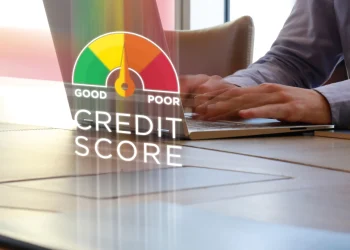Ever dreamt of earning while you’re asleep? You’re not alone; for many people, checking your bank balance in the morning before coffee is the ultimate goal. The worst part, though, is that passive income isn’t a money tree; it requires skill and effort, especially considering how quickly things are changing in 2025. Building passive income can be compared to caring for a garden, where you sow seeds, tend to them, and observe their growth over time. Things wither if you neglect to water or weed. We’ll highlight the most common passive income mistakes people make in this article and teach you how to avoid each one.
Passive Income Mistakes 1. Believing It’s Entirely Effortless
Picture this: you invest $100, hit “publish” on your e-course, and—poof!—dollars rain down. Too good to be true? Yup. While some income streams can scale back your day-to-day involvement over time, they all kick off with a hefty dose of elbow grease. Setting up a rental property? You’ll vet tenants, handle repairs, and paperwork. Launching an affiliate blog? Expect nights of keyword research, content creation, and SEO tinkering. Neglect these early efforts, and you’ll end up with a ghost town—zero traffic, zero rent payments, zero sales. The fix? Embrace the grind up front. Map out your tasks, block off focused work sessions, and celebrate small wins. Like lifting weights, effort compounds into results.
Mistake 2. Expecting Lightning-Fast Results
In our swipe-right culture, patience is a rare virtue. But fast money fantasies often lead to fast heartbreak. Building passive income is more like brewing a rich coffee: you can’t rush the roast without sacrificing flavor. Whether you’re stacking dividend stocks or creating an email funnel, give your strategy time to marinate. Ask yourself: “What’s realistic here?” and set milestones—$50 a month by Q3, $200 by year’s end. Track progress, tweak tactics, and stay in it for the long haul. Remember: overnight successes usually mask years of unseen hustle.
Mistake 3. Overlooking Diversification
Ever heard “Don’t bet the farm on a single horse”? It applies to your bank account, too. Relying solely on a single channel—like peer-to-peer lending or one digital product—leaves you wide open to market swings, platform policy shifts, or plain old bad luck. Imagine getting 100% of your income from ads on one social platform, only to discover they’ve changed the algorithm overnight. Ouch. Spread your bets: mix real estate, dividend-paying stocks, print-on-demand merch, and even creative royalties. That way, if one stream dries up, the rest keep flowing. A balanced portfolio is your passive income safety net.
Mistake 4. Ignoring Tax Implications
Although no one enjoys discussing taxes, it is best to avoid them at all costs. There are several types of passive income, including interest, royalties, capital gains, and rental profits, and each has its own tax regulations. You risk penalties that reduce your profitability if you neglect a necessary file or treat short-term gains like long-term gains. “That unexpected panic that hits every April when taxes are due?” Often self-inflicted. . The answer? Maintain thorough documentation and work with a tax expert who is knowledgeable about both offline and online passive income. To make April surprises feel more like confetti than crushing weight, automate bookkeeping with programs like QuickBooks or Wave and set aside a tax reserve. Aim for 20–30% of your earnings.
Mistake 5. Neglecting Ongoing Management
“Passive” doesn’t mean “abandoned.” It’s like staying in shape—you don’t have to work out all day, but if you stop moving altogether, things start to fall apart. Rental properties need occasional inspections, websites require plugin updates, and digital courses benefit from fresh content. Without check-ups, minor leaks become floods. Set up quarterly reviews: schedule property walkthroughs, audit your affiliate links, and survey customers for feedback. Automate what you can—like auto-responders and maintenance reminders—but stay hands-on enough to catch hiccups before they become disasters.
Mistake 6. Skipping Due Diligence

We’ve all met that “guru” with a glitzy webinar promising six-figure returns by Tuesday. Tempting, right? But jumping in without verifying legitimacy is like buying a car without a test drive—only to find out it doesn’t even start the next morning.. Before you commit cash or time, dig into the details. Read platform reviews, examine fee structures, and check company track records. If you’re eyeing a crowdfunding property, talk to local investors or inspect comparable sales. For digital ventures, analyze competitor performance and customer ratings. Doing your homework upfront shields you from surprise fees, stalled launches, or outright scams.
Mistake 7. Underestimating Initial Costs
Dreaming of passive income on a shoestring? Some methods—like writing an ebook—have minimal cash barriers, but they all demand at least time, energy, or resources. Under Budgeting can stall your project faster than a dead battery in winter. Itemize every expense: website hosting, marketing ads, legal fees, equipment, and yes, your own time (value it at market rates). Then tack on a 10–20% buffer. Feeling a pinch? Reprioritize or phase your launch—start small, prove the concept, then scale up. Proper budgeting is like a seatbelt; you hope you never need it, but you’ll sure be glad it’s there.
Mistake 8. Falling for Get-Rich-Quick Schemes
If it sounds too good to be true, run the other way. The internet is cluttered with shiny pitches: multi-level marketing, crypto “sure bets,” and weird pyramid sales funnels. These often prey on your FOMO, promising exponential returns with zero risk. Spoiler alert: risk is part of every legitimate venture. Instead, stick to models with transparent track records—index funds, rental markets in strong neighborhoods, or evergreen digital products like templates or guides. And when in doubt, ask yourself: “Has this proven itself over a market cycle?” If the answer’s “no,” keep scrolling.
Mistake 9. Ignoring Market Trends and Feedback
Remember how everyone thought Blockbuster was immortal? The lesson: industries evolve, customer tastes shift, and new platforms emerge. Maybe TikTok affiliates blow past your static blog, or decentralized finance outpaces old-school peer lending. Stay curious: subscribe to industry newsletters, follow thought leaders, and solicit customer feedback. Use polls, emails, or social media. If your audience is yawning at your product, tweak it—or pivot entirely. A nimble mindset turns stale streams into fresh opportunities.
Mistake 10. Not Setting Clear, Measurable Goals
Picture a ship without a destination—it might drift in circles forever. That’s your passive income plan without clear goals. Do you need an extra $500 a month for groceries? Or $5,000 a month to cover rent? Defining precise targets lets you choose the right strategies, allocate resources, and track progress. Write SMART goals—Specific, Measurable, Achievable, Relevant, Time-bound. Revisit them quarterly: celebrate wins, troubleshoot roadblocks, and adjust your course. With clear objectives, you transform vague aspirations into actionable blueprints.
Conclusion | Passive Income Mistakes
In 2025, the passive income arena is crowded, innovative, and a little unpredictable. Yet, by sidestepping these common passive income mistakes—believing in total effortlessness, chasing instant riches, ignoring taxes, and more—you’ll carve out a reliable, growing revenue stream. Treat your ventures like living projects: nurture them, learn from data, and stay goal-driven. When effort meets strategy, your passive income won’t just trickle—it’ll surge. So go ahead: plant those seeds, water them wisely, and watch your financial garden flourish. Your future self will thank you.













